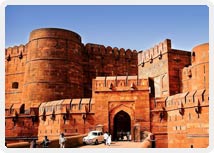 <--- Red Fort of Agra
<--- Red Fort of Agra
 <--- Red Fort of Agra
<--- Red Fort of Agra

 These are our maps.
These are our maps.






In this unit we studied Ancient Egypt, we looked at the geography and a little bit of the culture.
In the IB learner profile there are 10 profiles these include:
In this unit we did not use all the learner profiles, or cover them all but we did use a few of them in our work.
In IB we also have the Approaches to learning categories these include:
1. Organizational
2. Collaborative
3. Communication
4. Information Literacy
5. Reflection
6. Problem Solving and Thinking Skills
Through this unit I think that the approaches that we have covered include:
1. Organizational – Through this unit we had to be organized, this is because we had quite a few small projects going on. We had to organize time so that we could be efficient and get our work done while making it good quality. We also got a lot of papers that we had to keep organized so that when we needed something specific we would have it with us.
2. Collaborative – We only had one project where we needed to collaborate but it was a project that we didn’t really have that long of a period to work on, even though it was quite simple, we had to work on the project together quickly and well.
How did the physical environment affect the development of civilizations?
In every civilization the surroundings of the physical environment effect the development because physical environment can either kill a civilization or build it up. An example is a civilization that would start in the desert compared to one that starts near a lush, green river the civilization near the river is definitely going to develop much faster and become so much better than the civilization that starts in the desert. This is because the civilization near the river has so many more advantages and “gifts” than the desert has. A river can provide food for people, irrigation, land that is fertile for farming and much more. The physical environment can affect the civilization because it either gives the civilization more and builds it up or it take away, causing things like droughts, or famine.
